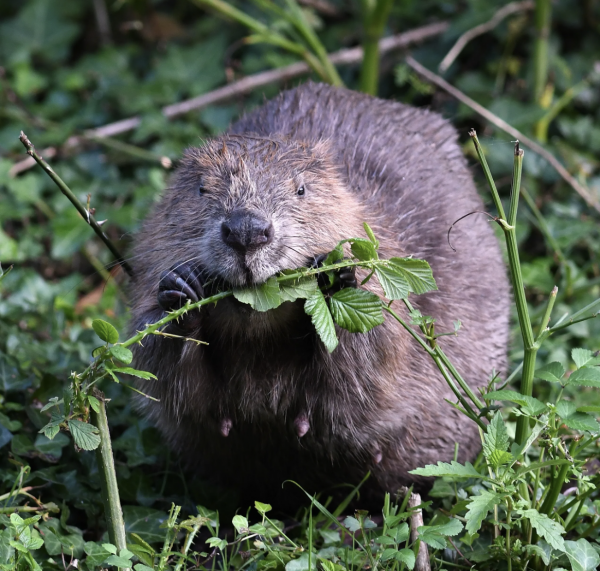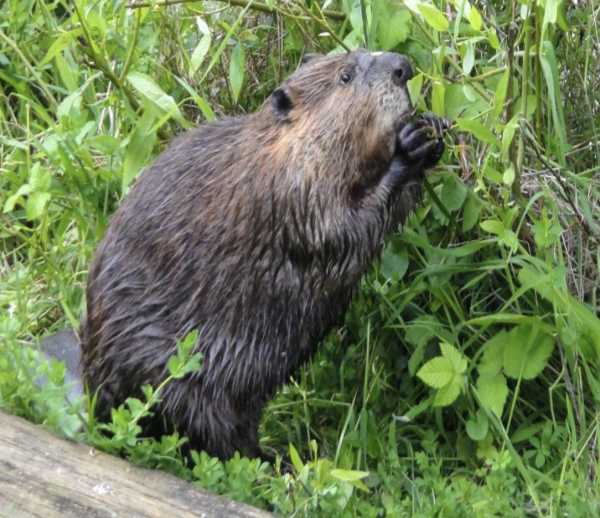Beavers are among the world’s largest of living rodents. Even though capybaras of South America are the world’s largest, beavers are by far the largest rodents in North America. North American Beaver and the Eurasian Beaver are the two living species. Being graceful swimmers, they have got pretty nifty and paddle-shaped tails that act like rudders in water. They propel through water with the help of their webbed hind feet, rather than using tails. These tree-gnawing mammals are famously busy and highly industrious critters. In order to create large ponds within forests, they can reengineer their favorite landscape on their own by means of strong teeth. They tend to peck at trees and build massive log and mud structures, called lodges (beavers’ home). Beavers love swimming in ponds and they are active all winter. Enough said! Now let’s take a deep dive into what do beavers eat in the wild.
What Do Beavers Eat In The Wild
Despite spending a lot of time in lakes and ponds, beavers do not eat fish. In fact, they are herbivores and have a strictly vegetarian diet. However, they change their eating habits with a change in seasons.

Photo © David Parkyn. Image Source: Beaver Trust
In spring and summer, beavers live off herbaceous plants like herbs, water lillies, ferns, algae, sedges, buds, cattails, shrub leaves, rushes, grasses, shoots and such other non-woody plants. In the absence of non-woody plants, they tend to feed on cambium of trees and shrubs. Besides, they may also eat buds, twigs and leaves.
Depending upon the availability of water lilies, these often form the bulk of the diet.
In fall and winter, these torpedo-shaped mammals generally go for woody plants and forage for bark, twigs, aspen, alder, dogwood and roots.
As the fall approaches, these animals live mainly on nuts, berries and fruits. During this season, acorns form the main component of their diet.
In Northwest Canada, beavers usually go after growing tips of willows and leaves during summer.
Beavers are known to gnaw at almost any kind of tree. That said, some of the most favored ones are willow, alder, poplar, birch and aspen.
They build food caches in freshwater right next to an underwater burrow or lodges. In winter, when ponds are frozen, beavers tend to dip into these tree and shrub branches (as well as water lily rhizomes).

Photo © John Reinke. Image Source: King County
As far as feeding habits are concerned, these aquatic animals are found to be ‘choosy generalists’. What it means is that despite the abundance of a few preferred plant or tree species, they still go for other less preferred shrubs.
At times, beavers may pick conifers (like Virginia and loblolly pines) in quantity, but they largely feed on deciduous trees.
They have chisel-like incisors that continually grow fairly rapidly (about 0.5 cm every month). Actually, there is an enamel coating on the outer surface of their teeth but it erodes much slower as compare to the inner soft dentine (coating). As a result the teeth remains sharp enough to cut through wood.
If you compare these animal ‘architects’ with other similar rodents, they tend to possess far greater bite force, thanks to their strong jaw muscles.
Sources & Further Reading:
Nicholls, Henry. “The truth about beavers“. BBC. Accessed 18 March, 2021
“Beaver“. National Geographic. Accessed 18 March, 2021
Yery, Erika K. “Living with beavers“. Wildlife Rescue League. Accessed 18 March, 2021
“Beaver“. Woodland Trust. Accessed 18 March, 2021
Pesaturo, Janet. “Beaver food and feeding habits“. Winterberry Wildlife. Accessed 18 March, 2021
“Beaver“. Smithsonian’s National Zoo & Conservation Biology Institute. Accessed 18 March, 2021
